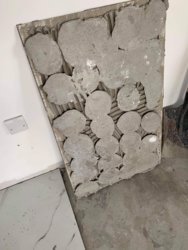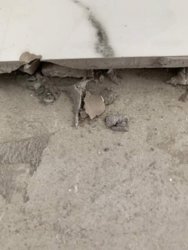Hi all, I’m new to this and tiling! Looking for advice!
Basically we built a 30sqm extension on our house to move the kitchen into it so we could have a larger living space,
It was recommended to use underfloor heating in the extension and a cement based liquid screed! (Rest of the house is heated by rads)
We went for 1.2m x .600m porcelain tiles!
The floor between the house and the extension wasn’t level being the extension was a bit lower than the original floor!
Anyway got our tiler organized and he told us the floor needed sealed with a primer and that the underfloor heating should be on for two weeks an off for at least a week before he started! All this was done!
Tiler started and when he was finished we where well impressed with his work!
Three weeks later when the new kitchen was being fitted they noticed a loose tile and the tiler blamed the type of screed! All the tiles in or 30sqm meter extension are loose but the rest of the house is fine! The ufh was switched back on 10 days after it was tiled at a low level! Will upload a few pictures so can can get advice on what we need to do to solve the problem!! Thank you ben




Basically we built a 30sqm extension on our house to move the kitchen into it so we could have a larger living space,
It was recommended to use underfloor heating in the extension and a cement based liquid screed! (Rest of the house is heated by rads)
We went for 1.2m x .600m porcelain tiles!
The floor between the house and the extension wasn’t level being the extension was a bit lower than the original floor!
Anyway got our tiler organized and he told us the floor needed sealed with a primer and that the underfloor heating should be on for two weeks an off for at least a week before he started! All this was done!
Tiler started and when he was finished we where well impressed with his work!
Three weeks later when the new kitchen was being fitted they noticed a loose tile and the tiler blamed the type of screed! All the tiles in or 30sqm meter extension are loose but the rest of the house is fine! The ufh was switched back on 10 days after it was tiled at a low level! Will upload a few pictures so can can get advice on what we need to do to solve the problem!! Thank you ben






